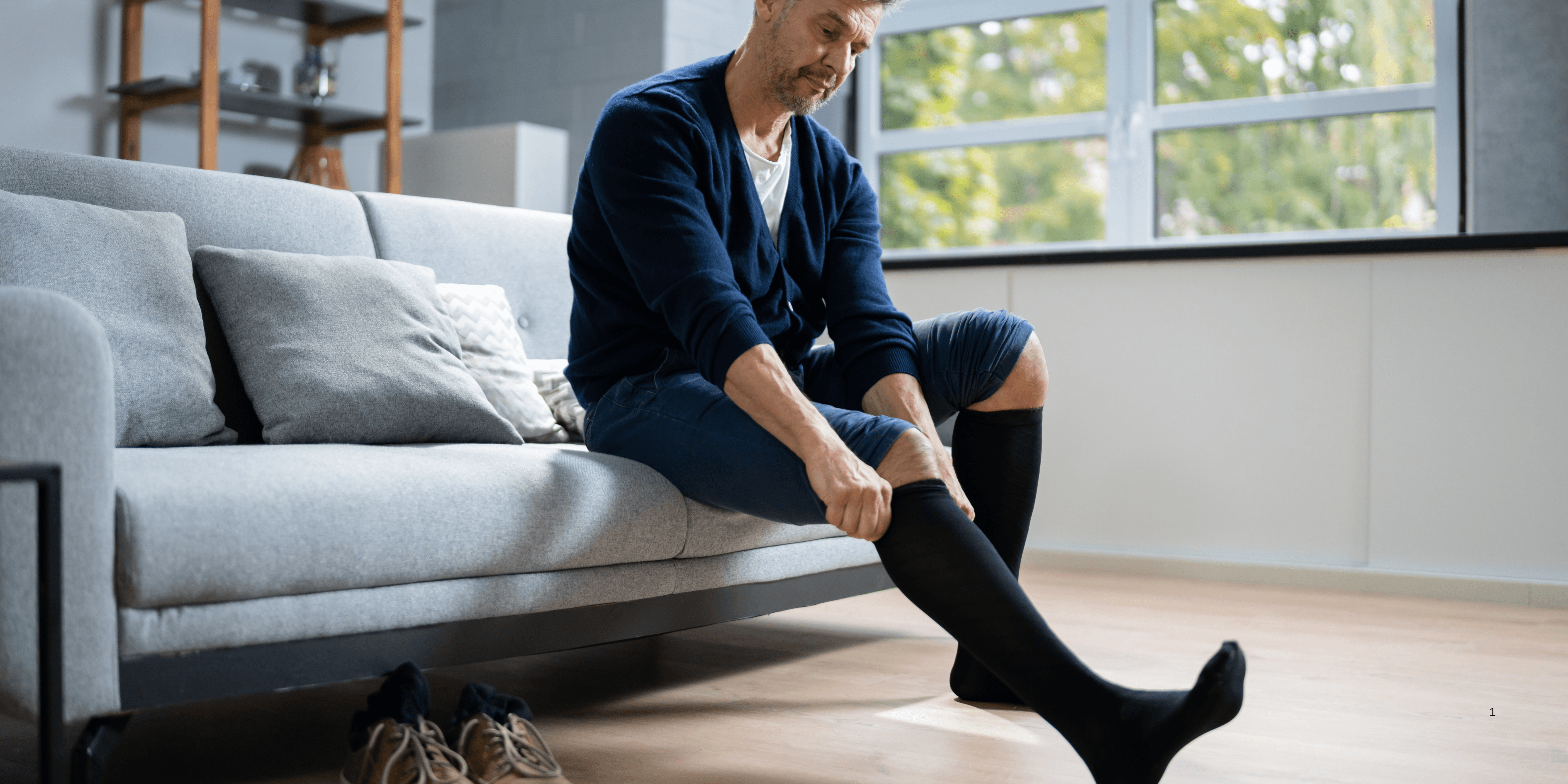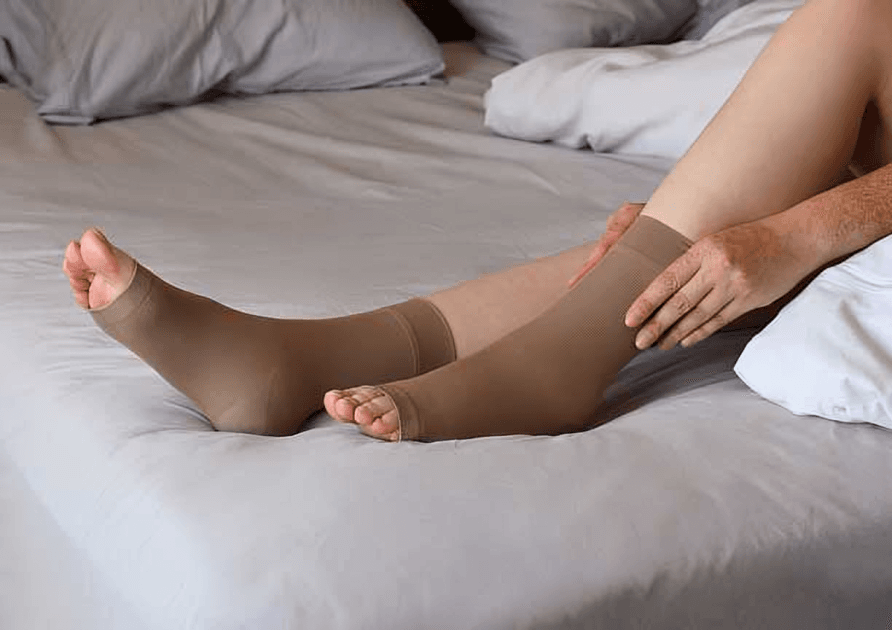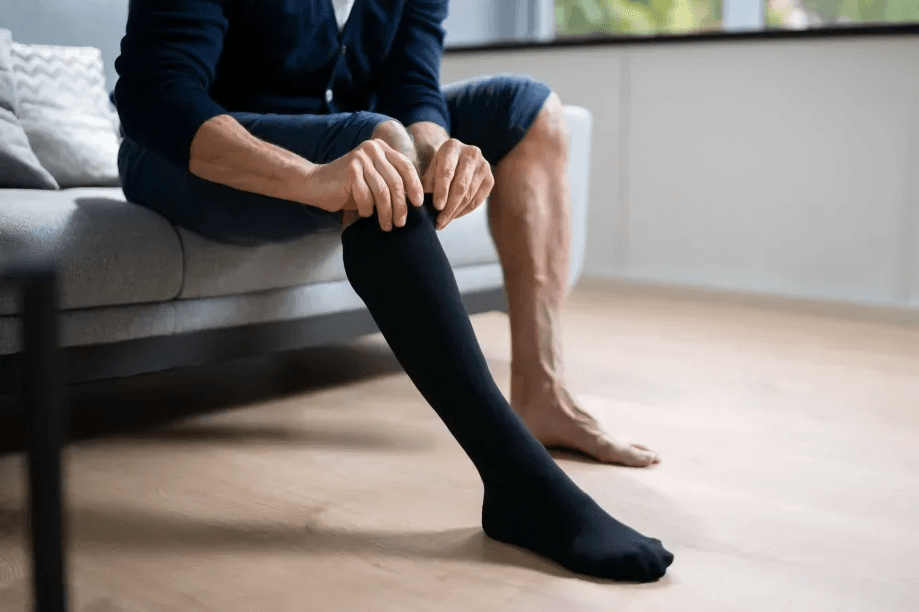
“
Understanding preventive measures for blood clots is vital for maintaining healthy blood circulation and avoiding life-threatening complications like deep vein thrombosis or pulmonary embolism. From staying active and eating wisely to consulting doctors about medications and risk factors, numerous steps can be taken to support blood vessel health. 1
1
”
A modern vascular surgeon once said, “Compression is a gentle force with powerful outcomes—it bridges traditional wisdom with scientific evidence to promote circulation and comfort in one calculated embrace.”1
Compression therapy helps blood vessels work better by supporting vein walls, promoting smoother blood return to the heart, and reducing the pooling of blood in the legs, which causes heaviness or swelling.2

Medical-grade compression is often prescribed to individuals recovering from surgeries, especially joint replacements or varicose vein procedures, to prevent blood clots and stimulate proper post-operative blood flow.
Athletes frequently use compression garments not just for recovery but also during exercise, as they may help reduce muscle vibration, improving endurance and shortening recovery periods after intense workouts. 3
People with chronic venous insufficiency (CVI) benefit from compression therapy, as it relieves symptoms like skin changes, pain, and leg swelling by supporting weakened valves inside the leg veins. 4
Graduated compression stockings apply more pressure at the ankle and gradually lessen up the leg, encouraging upward blood movement and combating gravitational resistance to flow in people with circulatory issues. 5
Compression therapy plays a vital role in managing Deep Vein Thrombosis (DVT) by improving circulation, thereby reducing the risk of dangerous clots forming in the deep veins of the legs. 6
Those who stand or sit for extended periods—such as teachers, drivers, or office workers—can use compression therapy to prevent lower leg fatigue and mild swelling caused by reduced venous return. 7
Pregnancy can place added pressure on veins, especially in the lower body, and compression therapy is often recommended to prevent varicose veins and promote healthier blood flow during these months. 8
Compression garments are used to support lymphatic drainage in patients with lymphedema, helping to move fluid from swollen tissues and reduce discomfort in affected arms or legs.9

Mild compression socks are often used during air travel to prevent swelling and reduce the risk of flight-related blood clots known as travel thrombosis, especially on long-haul flights.
Studies have shown compression therapy can improve healing rates in venous leg ulcers, as the consistent pressure encourages healthy tissue growth and prevents further breakdown of surrounding skin.10
For diabetic patients, carefully guided use of compression can help manage leg swelling, though it must be monitored closely to avoid compromising already fragile circulatory systems in the lower extremities. 11
Compression therapy is an essential part of post-sclerotherapy care, where veins are intentionally closed off; it keeps the treated vein collapsed and supports nearby tissue healing effectively.12
In burns and scar management, compression garments reduce excessive scar formation by applying steady pressure, which flattens scars and improves cosmetic outcomes during recovery. 13

Nighttime compression therapy isn’t commonly recommended unless specifically advised by a physician, as improper overnight use can restrict circulation instead of enhancing it, especially in patients with arterial conditions.
Compression wraps and bandages are often used in the early stages of treatment when swelling is significant and later replaced with stockings or sleeves for maintenance after symptoms reduce.14
Compression therapy doesn't cure underlying venous disease but helps manage symptoms; lifestyle changes and medical treatments may be necessary for a more permanent solution in advanced cases.15
Patients must be properly fitted for compression garments, as incorrect sizing can cause skin irritation or ineffective treatment; professional measurement ensures both comfort and efficacy. 16
The therapeutic pressure used in compression therapy is measured in mmHg, and the required level varies by condition—from mild daily support to high pressure for severe lymphedema or ulcer care.17


